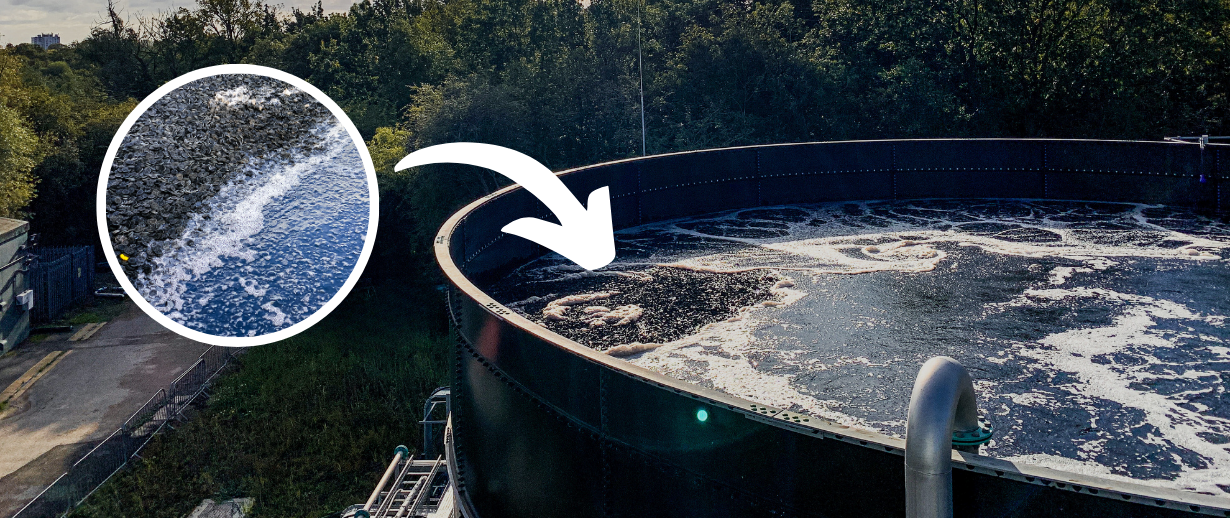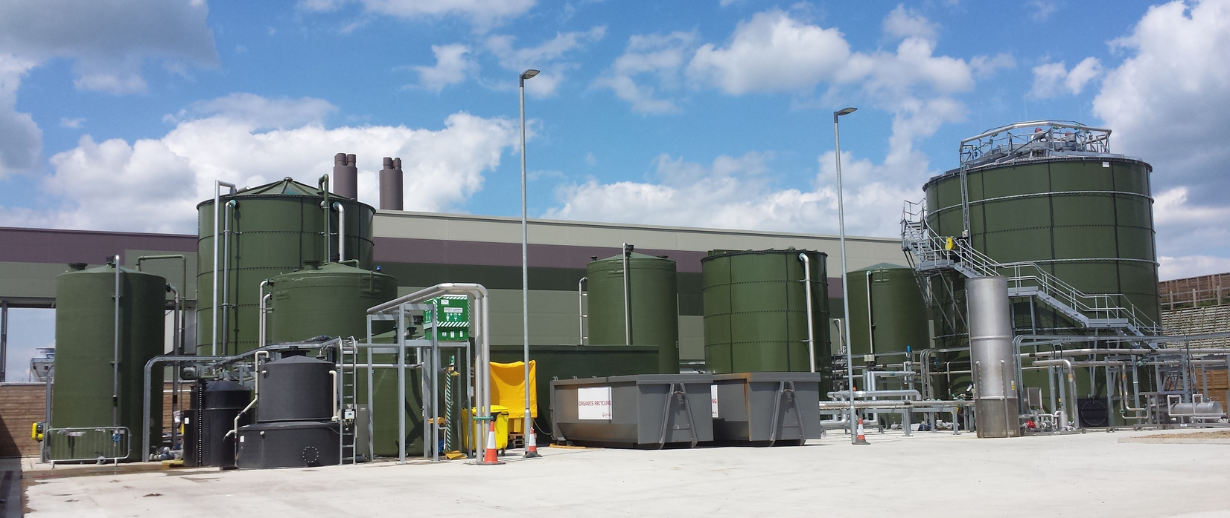Stringent and emerging regulations for wastewater treatment require the effective removal of potentially harmful pollutants before effluent can be discharged into the environment. In the following article, Simon Emms, Business Development Manager, looks at the benefits of both aerobic and anaerobic digestion and explains how a combination of the two can be utilised to achieve an optimum treatment regime.
For more complex or contaminated wastewater, the treatment process is typically carried out in a few phases to remove different pollutants:
- Primary phase – The removal of solid waste by sedimentation or floatation such as IDRAFLOT® DAF, Multiflo™ or Discfilter solids removal systems.
- Secondary phase – The removal of organic matter through biological processes such as microbial decomposition.
- Tertiary phase – This can be basic TSS removal or further treatment to meet the required water quality for discharge or in some cases onsite reuse
The secondary ‘organic’ removal phase works on a deeper level than the primary phase to physically degrade or break down contaminants by using aerobic and anaerobic microorganisms such as bacteria, algae and fungi. For this phase to be carried out as effectively as possible there are several factors to consider, including how the wastewater has been generated; time, energy and cost implications as well as effluent or output requirements. The optimum solution that encompasses each of these factors could be to utilise one or a combination of aerobic and anaerobic digestion processes.
What is Aerobic Treatment?
Aerobic effluent treatment is a biological process that uses oxygen to break down contaminants and pollutants. Oxygen is continuously mixed into the wastewater by a mechanical aeration device, such as an air blower or compressor. Aerobic microorganisms then feed on the wastewater’s organic matter, converting it into carbon dioxide and biomass which can be removed, eventually resulting in water that is clean enough to discharge.

An example of an aerobic biological system would be our AnoxKaldnes™ MBBR (Moving Bed Bio Reactor) a high-performance biological system that utilises media carriers to reduce the overall size and footprint requirements when compared to conventional biological processes. If water reuse is required we can also utilise our MBR (Membrane Bio Reactor) which is another aerobic process.
Key Features and Benefits of Aerobic Treatment
The aerobic treatment of wastewater is a stable, simple process that efficiently removes harmful pollutants to produce high-quality effluent. However, the oxygenation element of the process can be energy-intensive, which can impact on operation and maintenance costs so the plant design is a key consideration for optimised operating costs. In aerobic systems, biosolids can also form where microbes cannot digest some solid waste as well as containing excess biomass from the biological process. Typically, an aerobic process will require the implementation of a solids removal stage to remove this biomass such as our IDRAFLOT® or Hydrotech Discfilter solids removal systems. This is completely normal in aerobic plant operation. Watch our videos on the IDRAFLOT® and Hydrotech Discfilter below.
What is Anaerobic Digestion?
Anaerobic digestion treats medium to high-strength wastewater using bacteria to transform organic waste into energy. It is a naturally occurring biological process under the right conditions, however, in order to be used on a large scale, the process is optimised in closed digester tanks with no oxygen input. The microorganisms digest the organic waste matter and convert it into biogas.
Key Features and Benefits of Anaerobic Digestion
Anaerobic digestion can be used to treat a broad range of organic waste and wastewater, from agricultural to industrial applications. It is a flexible process that can be less energy intensive than aerobic digestion and the equipment typically has a smaller footprint so it is beneficial for industrial sites with limited footprint or access. Anaerobic Digestion produces less sludge when compared to conventional aerobic plants but with the added benefit of biogas production which can be used as a source of renewable energy (natural gas/methane) which can support ESG objectives as well as on-site energy which can insulate the site owner from energy market impacts.

In some cases, anaerobic digestion needs to be followed by an aerobic plant to ensure the water is safe enough to discharge back into watercourses. However, Veolia Water Technologies can support clients in determining the exact requirements by working with our in-house process and engineering specialists.
The Ultimate Treatment Combination
Both aerobic and anaerobic digestion can contribute to the movement towards the circular economy, where waste that is discarded systematically becomes a valuable resource for an alternative purpose (Waste to Energy). There are demonstrable benefits to both methods which is why a combination of aerobic and anaerobic processes can be employed in the treatment of wastewater to ensure complete contaminant and nutrient removal. To effectively combine these systems, it is imperative to carefully assess both the influent and discharge water quality, as well as considering whether the site would benefit from by-products like biogas to support onsite energy generation.
For more information and to discuss the technology options available for your site’s wastewater treatment requirements, contact us, here.